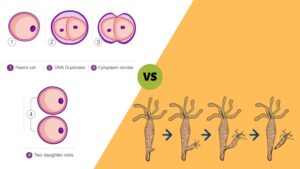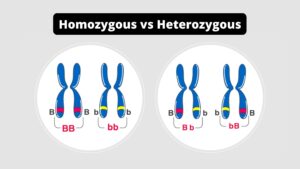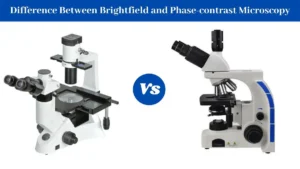What is Breathing?
Breathing is a biological process which involves exchanges of gases via exhalation and inhalation.
Breathing is also known as ‘external respiration’ because it is an external procedure of bringing oxygen into the body and exchanging carbon dioxide through the respiratory organs. The breathing process in all vertebrates is comprised of a high-yielding tubes which connect the nose with the alveoli. Breathing is a continuous cycle in which the amount of respiratory cycles in a minute is referred to as breathing or the rate of breathing. Under normal circumstances the speed and the depth of breathing is controlled by various homeostasis processes to regulate the partial pressure of carbon dioxide levels in the blood.
The breathing mechanism is based on the contraction and relaxation of various muscles that are located in the thoracic area because the lungs aren’t capable of inflating by alone. In vertebrates, including humans the inflating of the lung is caused by diaphragm’s contraction and the intercostals muscles. This causes the rib cage to move upwards and then outwards. Inhalation is when air is drawn into the nose, which goes through the nasal passageway, the larynx, and the pharynx to get to the tree of respiratory.
The respirator tree is comprised of the trachea which is divided into several branches that are narrower. Its number of branches varies from organism to organism, for instance, humans have around 23 branches, while that of mice can have up to 13 branches. The air flows through these branches until it gets to the alveoli. Gas exchange occurs in the alveoli , where the oxygen is released into the blood that is present within blood vessels and carbon dioxide from the blood is absorbed to the alveoli.
The carbon dioxide is exhaled after the diaphragm as well as others respiratory muscle relax, which causes the lung to contract. Exhalation is an involuntary process. The air inside the lungs is then pushed upwards and out, causing it to travel through the nasal passageway and trachea and back into the air. Breathing is an active process which requires energy. Insufficient energy can cause breathing difficulties.
What is Respiration?
Respiration is a process in the biochemical world that releases the energy of organic molecules, which are used later to carry out various physical tasks.
Respiration is also known as “internal respiration” because the process is internal and consists breaking down organic compounds complex into water and carbon dioxide and releasing energy. The process of respiration, in contrast to breathing, occurs in all living creatures. It is an involuntary procedure that takes place automatically when all reactants needed for the reactions are present. It occurs within mitochondria of all cells in the body.
Respiration is a process of metabolism which involves the oxidation of glucose in the absence of oxygen, resulting in carbon dioxide as well as water. It can happen in oxygen’s presence or in the absence of oxygen. In the presence of oxygen is aerobic, while respiration that occurs in absence of oxygen can be described as anaerobic. The reactions that are involved in cell respiration are catabolic reactions that reduce complex compounds into simpler ones.
The respiration process is dependent on a variety of enzymes that catalyze different metabolic steps within the pathway. These enzymes control the speed as well as the direction these processes take. These enzymes reside on both the inner and the outer mitochondrial membrane as well as within the cytoplasm. The glycolysis enzymes are found in the cytoplasm. However, the Kreb’s cycle enzymes are located in the outer mitochondrial membrane. Cellular respiration is triggered by several cycles, including glycolysis, Kreb’s cycle , and the electron transportation chain. These reactions produce a significant amount of energy as well as the oxidation of organic substances.
The most commonly utilized by living organisms during the process of respiration are amino acids, carbohydrates and the fatty acids. The most commonly used antioxidant is molecular oxygen. However, other chemicals such as sulphur and nitrogen are also utilized. While respiration is usually linked to the release of carbon dioxide gas other types of respiration, such as fermentation are equally important. Fermentation is the main ingredient in alcohol production. In the same way, other anaerobic fermentation processes such as lactic acid production or propionic acid ferment are vital in the making of cheese as well as other milk products. The process of respiration is a vital metabolic process because it is a largely passive process, which results in the production of a lot of ATPs.
Difference Between Breathing and Respiration – Breathing vs Respiration
| Base for Comparative | Breathing | Respiration |
| Definition | Breathing is a biological process in which you exchange gas through exhalation and inhalation. | Respiration is a process in the biochemical world that releases the energy of organic molecules that can be utilized for various physical tasks. |
| Process | It is a biomechanical/biophysical process. | It is an enzyme-based process. |
| Steps | Breathing is a process that involves two steps: inhalation and exhalation. | Respiration comprises three steps that include glycolysis, Kreb’s cycle and the electron transport chain. |
| Involuntary or voluntary | Breathing is a combination of voluntary and involuntary actions. | Respiration is an involuntary act. |
| Passive or active | Inhalation is a process that is active while exhalation is a passive activity. | Except for certain reactions in glycolysis, none of the other processes require energy. |
| Scope | Breathing is a way to supply oxygen to various areas of the body. | Respiration is a major source of energy due to the degrading of organic substances. |
| Occurs in | Breathing is a common feature in all vertebrates, as well as certain arthropods. | Respiration is present in every living things on planet. |
| Energy | Breathing does not provide energy. | In the process, respiration creates of energy. |
| Enzymes | There are no enzymes involved in the process of breathing. | Many enzymes catalyze the different processes of respiration. |
| Organs | The respiratory system includes many organs. the respiratory system. | The mitochondria are the place where respiration takes place. of cells. |
| Intracellular or extracellular | The breath is an extracellular procedure. | The process of respiration is intracellular. |
| Muscles | The various respiratory muscles as well as the diaphragms are involved in breathing. | Muscles do not play a role during breathing. |
| Regulation | Breathing is controlled by respiratory muscles as well as diaphragm. | Respiration is controlled by several enzymes. |
| Main activities | The two main events that happen that occur during breathing include gas exchange and airflow. | Two of the major processes that occur in respiration are gas exchange and the breakdown from complex substances into more simple ones. |
| Metabolic reactions | There are no metabolic reactions in breathing. | Respiration is a process of metabolism that requires numerous reactions. |



